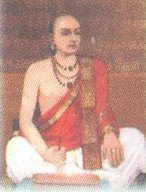
Nannaya Bhattaraka was a Telugu poet and the author of Andhra Mahabharatam, a Telugu retelling of the Sanskrit-language Mahabharata. Nannaya is generally considered the first poet of Telugu language. He was patronized by Rajaraja Narendra of Rajamahendravaram. Rajaraja Narendra was an admirer of Mahabharata and wanted the message of the Sanskrit epic to reach the Telugu masses in their own language and idiom. He commissioned Nannaya, a scholar well versed in Vedas, Puranas, and Itihasas for the task. Nannaya began his work in c. 1025 CE and wrote Adi Parvam, Sabaparvam, and a part of Aranyaparvam and passed away.
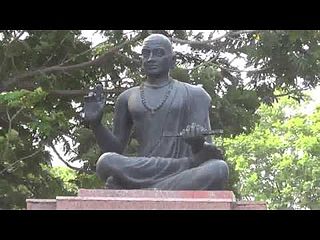
Tikkana (1205–1288) was a 13th century Telugu poet. Born into a Telugu-speaking Niyogi Brahmin family during the golden age of the Kakatiya dynasty, he was the second poet of the "Trinity of Poets " that translated Mahabharata into Telugu. Nannaya Bhattaraka, the first, translated two and a half chapters of Mahabharata. Tikkana translated the final 15 chapters, but did not undertake translating the half-finished Aranya Parvamu. The Telugu people remained without this last translation for more than a century, until it was translated by Errana.
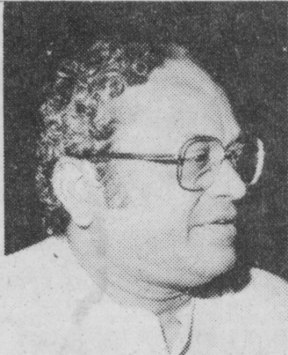
Cingireddi Narayana Reddy, popularly known as CiNaRe, was an Indian Telugu-language poet, writer, and critic. He had produced over eighty literary works including poems, prose-plays, lyrical plays, translations, and ghazals. He was also a professor, film lyricist, actor, and Rajya Sabha politician. He also served as the Vice Chancellor of Telugu University.

Telugu literature is the body of works written in the Telugu language. It consists of poems, short stories, novels, plays, and song lyrics, among others. There is some indication that Telugu literature dates at least to the middle of the first millennium, the first extant works are from the 11th century when the Mahabharata was first translated to Telugu from Sanskrit by Nannaya. The language experienced a golden age under the patronage of the Vijayanagara king-poet Krishnadevaraya.

Eastern Chalukyas, also known as the Chalukyas of Vengi, were a dynasty that ruled parts of South India between the 7th and 12th centuries. They started out as governors of the Chalukyas of Badami in the Deccan region. Subsequently, they became a sovereign power, and ruled the Vengi region of present-day Andhra Pradesh until c. 1130 CE. They continued ruling the region as feudatories of the Cholas until 1189 CE.
Kammanadu is a historical region in the Indian state of Andhra Pradesh. It consisted of parts of the present day Guntur and Prakasam districts.
Ponna (c. 945) was a noted Kannada poet in the court of Rashtrakuta Dynasty king Krishna III (r.939–968 CE). The emperor honoured Ponna with the title "emperor among poets" (Kavichakravarthi) for his domination of the Kannada literary circles of the time, and the title "imperial poet of two languages" for his command over Sanskrit as well. Ponna is often considered one among the "three gems of Kannada literature" for ushering it in full panoply. According to the scholar R. Narasimhacharya, Ponna is known to have claimed superiority over all the poets of the time. According to scholars Nilakanta Shastri and E.P. Rice, Ponna belonged to Vengi Vishaya in Kammanadu, Punganur, Andhra Pradesh, but later migrated to Manyakheta, the Rashtrakuta capital, after his conversion to Jainism.

Vijayanagara literature was produced in the Vijayanagara Empire during a golden age of literature in South India in general. The rulers patronised Kannada, Telugu, Sanskrit and Tamil scholars who wrote in the Jain, Virashaiva and Vaishnava traditions. The period produced hundreds of works on all aspects of Indian culture, religion, biographies, Prabhandas (stories), music, grammar, poetics and medicine. An attempt is made in this section to list the various poets and saints and their most famous works.
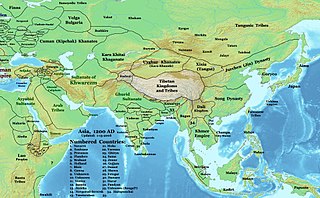
Hoysala literature is the large body of literature in the Kannada and Sanskrit languages produced by the Hoysala Empire (1025–1343) in what is now southern India. The empire was established by Nripa Kama II, came into political prominence during the rule of King Vishnuvardhana (1108–1152), and declined gradually after its defeat by the Khalji dynasty invaders in 1311.
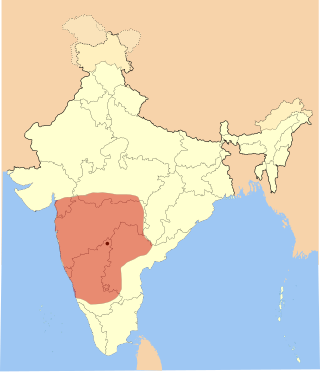
A large body of Western Chalukya literature in the Kannada language was produced during the reign of the Western Chalukya Empire in what is now southern India. This dynasty, which ruled most of the western Deccan in South India, is sometimes called the Kalyani Chalukya Dynasty after its royal capital at Kalyani, and sometimes called the Later Chalukya Dynasty for its theoretical relationship to the 6th-century Chalukya dynasty of Badami. For a brief period (1162–1183), the Kalachuris of Kalyani, a dynasty of kings who had earlier migrated to the Karnataka region from central India and served as vassals for several generations, exploited the growing weakness of their overlords and annexed the Kalyani. Around 1183, the last Chalukya scion, Someshvara IV, overthrew the Kalachuris to regain control of the royal city. But his efforts were in vain, as other prominent Chalukya vassals in the Deccan, the Hoysalas, the Kakatiyas and the Seunas destroyed the remnants of the Chalukya power.
Nāgavarma I (c. 990) was a noted Jain writer and poet in the Kannada language in the late 10th century. His two important works, both of which are extant, are Karnātaka Kādambari, a champu based romance novel and an adaptation of Bana's Sanskrit Kādambari, and Chandōmbudhi, the earliest available work on Kannada prosody which Nāgavarma I claims would command the respect even of poet Kalidasa. According to the scholars K.A. Nilakanta Shastri and R. Narasimhacharya, Nāgavarma I belonged to a migrant Brahmin family originally from Vengi. According to the modern Kannada poet and scholar Govinda Pai, Nāgavarma I lived from 950 CE to 1015 CE. So popular was Nāgavarma I's poetic skills that King Bhoja of Malwa presented him with horses, in appreciation of his poetic skills.

Rashtrakuta literature is the body of work created during the rule of the Rastrakutas of Manyakheta, a dynasty that ruled the southern and central parts of the Deccan, India between the 8th and 10th centuries. The period of their rule was an important time in the history of South Indian literature in general and Kannada literature in particular. This era was practically the end of classical Prakrit and Sanskrit writings when a whole wealth of topics were available to be written in Kannada. Some of Kannada's most famous poets graced the courts of the Rashtrakuta kings. Court poets and royalty created eminent works in Kannada and Sanskrit, that spanned such literary forms as prose, poetry, rhetoric, epics and grammar. Famous scholars even wrote on secular subjects such as mathematics. Rashtrakuta inscriptions were also written in expressive and poetic Kannada and Sanskrit, rather than plain documentary prose.
Medieval Kannada literature covered a wide range of subjects and genres which can broadly be classified under the Jain, Virashaiva, Vaishnava and secular traditions. These include writings from the 7th century rise of the Badami Chalukya empire to the 16th century, coinciding with the decline of Vijayanagara Empire. The earliest known literary works until about the 12th century CE were mostly authored by the Jainas along with a few works by Virashaivas and Brahmins and hence this period is called the age of Jain literature,. The 13th century CE, to the 15th century CE, saw the emergence of numerous Virashaiva and Brahminical writers with a proportional decline in Jain literary works. Thereafter, Virashaiva and Brahmin writers have dominated the Kannada literary tradition. Some of the earliest metres used by Jain writers prior to 9th century include the chattana, bedande and the melvadu metres, writings in which have not been discovered but are known from references made to them in later centuries. Popular metres from the 9th century onwards when Kannada literature is available are the champu-kavyas or just champu, vachanasangatya, shatpadi, ragale, tripadi, and kavya.

Vijayanagara literature in Kannada is the body of literature composed in the Kannada language of South India during the ascendancy of the Vijayanagara Empire which lasted from the 14th through the 16th century. The Vijayanagara empire was established in 1336 by Harihara I and his brother Bukka Raya I. Although it lasted until 1664, its power declined after a major military defeat by the Shahi Sultanates in the battle of Talikota in 1565. The empire is named after its capital city Vijayanagara, whose ruins surround modern Hampi, now a World Heritage Site in Karnataka.
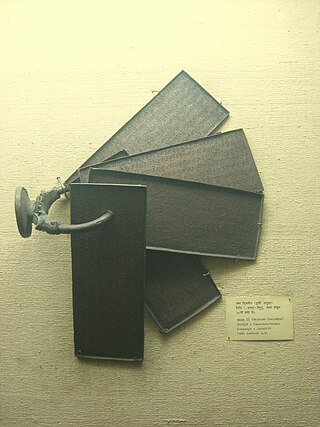
The Telugu–Kannada script was a writing system used in Southern India. Despite some significant differences, the scripts used for the Kannada and Telugu languages remain quite similar and highly mutually intelligible.
Vemulawada Bhima alias 'Vemulawada Bheemakavi' was a hugely popular Telugu poet for his style of poetry and is considered to be a demi-god for his powers.
The Chalukyas of Vemulavada were an Indian dynasty that ruled in and around the present-day Telangana between 7th and 10th centuries. Their capital was located at Vemulavada, and they were vassals of the Rashtrakutas.
Kavijanasrayam, also referred to as KavijanaaSrayamKavijanaasrayamu and Kavijanaashrayam, a Jain Literature, is considered by scholars to be the earliest work detailing Telugu prosody, that is, how the basic rhythm of verses in Telugu poetry is structured. The work was authored by Malliya Rechana, a Telugu language poet and writer, who lived in the 11t century in the present-day Vemulawada, Telangana region of India.

Bommalagutta also known as Siddhula Gutta, Bommalamma Talli gutta and Vrishabhadri hill a Jain centre situated near Kurikyala village of Karimnagar district in Telangana. This Jain center is situated 3 km from another famous Jain center Kulpakji.
Nachana Soma-natha was a 14th century Telugu language poet from the Vijayanagara Empire of southern India. He translated the Sanskrit work Harivamsa into Telugu as Uttara-Harivamsamu, and also wrote the now-lost Vasanta Vilasamu, an early prabandha work.










